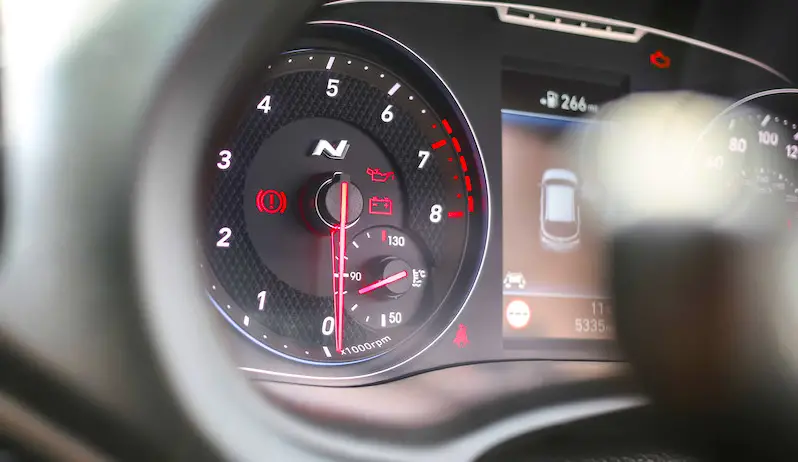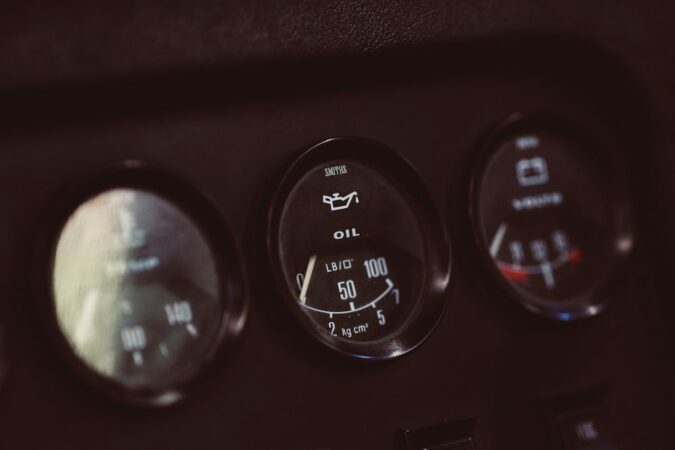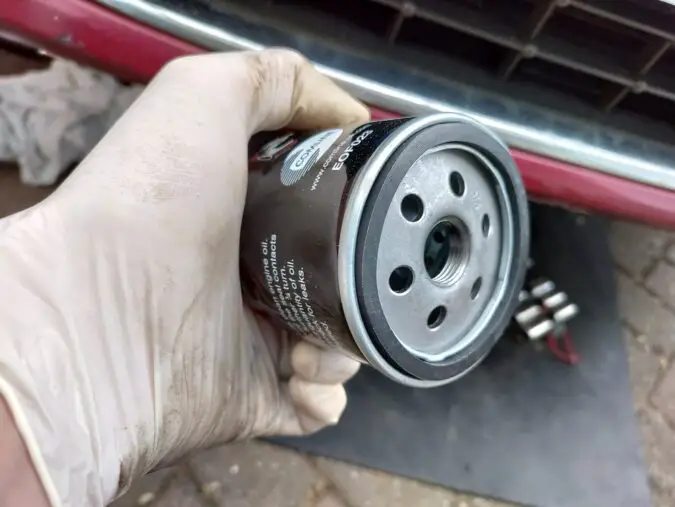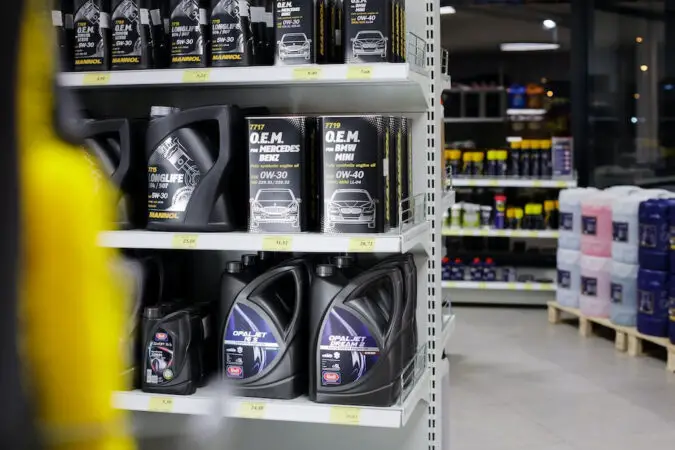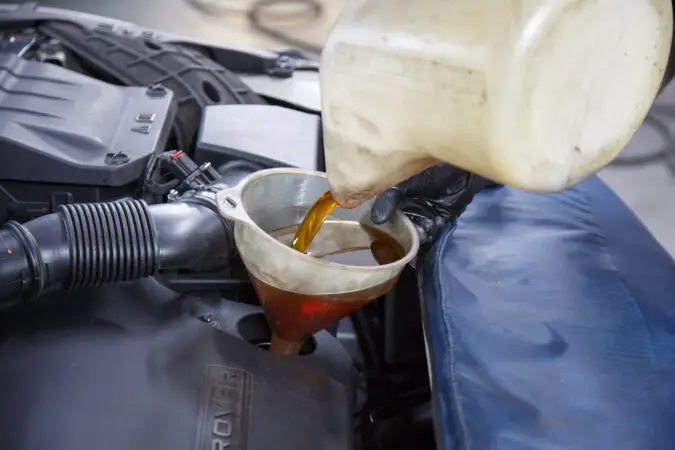If you are a gearhead, you should have a good understanding of the importance of oil pressure. As most of you may already know, it is one of the most important factors when it comes to making an engine run as intended. But, as the popular Mark Twain quote states, “Too much of anything is bad”, and this stands true for oil pressure as well. Want to know what cause high oil pressure? If so, read on!
Excessive oil pressure can have a lasting negative effect on your engine, so it is important to identify and remedy this problem at the first sign. Today, we will tell you everything you need to know about high oil pressure, including the causes, symptoms, and what you can do to prevent these problems in the future.
We know that you are curious to learn more about this common issue, so let’s get started. First, we will tell you about the oil pressure gauge, and how it lets you know the oil pressure inside your engine accurately.
Oil Pressure Gauge
The oil pressure gauge is the best indication you have when it comes to determining the oil pressure of your vehicle. Just like the other gauges, the oil pressure gauge acts as a valuable source of information that helps drivers ensure the longevity of their cars.
Although this gauge mainly measures and indicates the oil pressure, its information can be used to uncover hidden reliability issues. Problems like blown head gaskets, oil pump failures, and leaking hoses can all be uncovered through oil pressure gauge readings.
Nowadays, you can find two types of oil pressure gauges on the market. They are digital oil pressure gauges and mechanical ones. Out of these two, mechanical gauges have been around for longer.
They use pipes to take oil pressure readings and display them through a traditional needle display. Mechanical oil pressure is a cost-effective way to get an accurate reading.
Most modern cars have replaced mechanical oil pressure gauges with digital ones. As the name suggests, these gauges come with a digital display and are powered by your vehicle’s electrical system. When compared with mechanical gauges, these offer a wide variety of information and are generally more reliable.
Every gearhead should know how to properly read an oil pressure gauge. Usually, this gauge has a label saying “Oil” and is numbered from either 1 – 80 or 1 – 100. However, there are some that use “H” and “L” to indicate the high and low levels of pressure as well.
The reading being settled in the middle of the dial indicates that your engine is in good health.
Oil Pressure
Before investigating what cause high oil pressure, it is important to understand just why oil pressure is such an important metric for vehicles. You see, oil pressure is built up when engine oil flows through the engine. Then, this pressure ensures that the oil reaches every nook and cranny of the engine and lubricates it properly.
Without proper lubrication, the internal engine components will wear out quickly. In addition, the engine may not run smoothly, and you’ll have to visit the mechanic more often than not. Similarly, too much oil pressure causes its own set of issues as well.
Engine Oil Pressure Sensor
Every modern vehicle comes with an engine oil pressure sensor that monitors the oil pressure inside the engine. It sends this data to the vehicle’s onboard computer as well as to the instrument cluster. With that in mind, you could instead diagnose sensor-related faults by scanning for OBD trouble codes, such as P0521.
Typically, you can find this sensor on the side of the engine. Most cars have it situated near the bottom of the cylinder head. Some have it mounted directly to the cylinder head as well. Furthermore, there will be a few wires and a block connector attached to the sensor.
You can find two different types of oil pressure sensors on the market. They are,
- Oil Pressure Sender
- Oil Pressure Switch
Let us take a closer look at both of these sensor types to better understand how they work.
Type #1 – Oil Pressure Sender
These sensors detect the oil pressure and send it to the onboard computer. Oil pressure senders (or the oil sending unit) can display several readings, and they are mainly used for diagnostics and logging.
Type #2 – Oil Pressure Switch
Oil pressure switches are a type of mechanical device. As the name suggests, they contain a switch inside and can have one, two, or three pins depending on the make and model of the vehicle. The switches will close when they detect low oil pressure.
The easiest way to identify a faulty oil pressure sensor is through the use of the oil pressure indicator light on your dashboard. Depending on the type of issue, the oil pressure light will illuminate in different ways. Here are some of the most common symptoms of a faulty oil pressure sensor.
- Oil Pressure Light Turning On
- Error On The Oil Pressure Gauge
- Blinking Oil Pressure Light
Faulty Oil Pressure Sensor Symptoms #1 – Oil Pressure Light Turning On
If the oil pressure light on your dashboard turns on even if the oil pressure is at a normal level, a faulty oil pressure sensor might be the culprit behind it. We recommend you take your vehicle to a mechanic and have them inspect the sensor just to make sure.
Faulty Oil Pressure Sensor Symptoms #2 – Errors On The Oil Pressure Gauge
This is a symptom that is mainly found in older vehicles with mechanical oil pressure gauges. A broken oil pressure sensor or connection issues will cause the gauge to be stuck at zero even when the oil pressure is normal. If this happens to your vehicle, the wiring to the sensor should be inspected and replaced if necessary.
Faulty Oil Pressure Sensor Symptoms #3 – Blinking Oil Pressure Light
The final faulty oil pressure sensor symptom we’ll be taking a look at is the blinking of the oil pressure light. You might otherwise be familiar with a warning message akin to ‘oil pressure low stop engine’ instead, which appears in the event of low oil pressure.
Most drivers are worried about their oil pressure level when this light blinks on and off. When you encounter this issue, first inspect the oil level and see if it is at the recommended level. If there is enough oil in the system, it might be time to get the sensor inspected by a professional.
Normal Oil Pressure
If you are worried about what cause high oil pressure, it might interest you to learn about the normal oil pressure that vehicles are recommended to have.
Although the exact figures vary depending on the make and model of the vehicle, most mechanics recommend the oil pressure to be between 25 and 65 PSI. If your oil pressure is higher or lower than that, it may cause some reliability issues in the future.
Now that you have a clear understanding of the normal oil pressure an engine should have, it is time to move on to and discuss what cause high oil pressure in more detail.
High Oil Pressure
If the oil pressure of your vehicle starts creeping past the 65 PSI mark and beyond, it is safe to assume that it is suffering from high oil pressure. This is not a minor issue, as the increase in pressure can cause excessive wear and tear on different components of your engine.
Before diving into what cause high oil pressure, there are a few things that you should understand. First and foremost, the oil pressure will slightly go up when you accelerate. However, the rise should be gradual. Make sure that the pressure levels fall once you take your foot off the throttle.
If the rise in oil pressure is erratic or if the pressure levels don’t come down once they go up, your vehicle might be suffering from high oil pressure. In addition to the issues we discussed earlier, high oil pressure can cause the engine to overheat as well.
The overheating will take place when the high oil pressure is paired with oil that doesn’t have enough viscosity. Overall, the type of engine oil you use plays a major part in deciding the oil pressure of your engine. We will discuss more on this factor later on.
There are several problems that can lead to high oil pressure issues with your vehicle. Some of the most common causes include,
- Blocked Filters
- Pressure Relief Valve Issues
- Using The Wrong Type Of Engine Oil
- Faulty Sensors
- Oil Passage Blocks
- Cold Engine
- Oil Pump Issues
Cause #1 – Blocked Filters
The oil filter is responsible for picking up harmful contaminants from engine oil and removing them to prevent damage to the internals. These contaminants include the likes of dirt, dust, and even metal flakes.
Over time the oil filter will get clogged by this debris, reducing its effectiveness. Additionally, there is the possibility of it getting damaged as well. If this happens, the oil flow efficiency through it will also be reduced. As a result, the engine temperature will rise, causing high oil pressure issues.
This problem will be even more highlighted if your vehicle has the oil pressure sensor located in front of the oil filter. The best way to avoid this issue is by replacing the oil filter at scheduled intervals. Most manufacturers recommend replacing this component every 3000 miles.
Luckily it is not an expensive repair, and most vehicle owners will be able to perform it by themselves. However, if you decide to take your vehicle to a mechanic, expect to pay between $35 and $75. However, you will have to spend an extra few bucks if your vehicle only takes synthetic oils.
So, make sure you consult with a technician on do you have to change the oil filter every time. Opting for the best and most robust oil filter also helps with those clogs. And if you’re having trouble with an oil filter that won’t come off, we also have guides on finding a good oil filter wrench.
Cause #2 – Pressure Relief Valve Issues
The pressure relief valve is another important component in maintaining the oil pressure at a reasonable level. It consists of three components – a plug, a spring, and a piston.
This valve carries out two main responsibilities. First up is regulating the oil flow through the engine block. And the other is minimizing damage to the engine’s internals from high oil pressure.
When the pressure inside the engine builds to an unsafe level, the piston of the pressure relief valve is forced against the spring. This allows more oil to pass through, decreasing the pressure in the process. However, when this valve malfunctions, the oil pressure will continue rising to an unsafe level.
There is no way to confirm whether the relief valve is faulty without visually inspecting it first. In most vehicles, this valve is located inside the oil pump. So, when it goes bad, oftentimes you’ll have to replace the entire oil pump to get rid of the issue.
Cause #3 – Using The Wrong Type Of Engine Oil
The type of engine oil you use can have a significant impact on the oil pressure. Putting oil of the incorrect grade or viscosity into your engine can be the reason behind high oil pressure in your engine.
The grade indicates the thickness or thinness of the engine oil. Typically, you should use thicker engine oil if you live in an area with a warmer climate. The thicker the oil gets, the more pressure it requires to circulate through the engine’s internals.
Similarly, you should use a thinner engine oil like 5W if the area you live in has cold weather. Thinner oils flow better through the system and can get warmed up relatively easily. It is recommended that you only use the types of engine oils preferred by the vehicle’s manufacturer.
Not changing engine oil at the recommended intervals will also cause the oil pressure to build up. As time passes, the oil loses its viscosity due to natural degradation. This makes it harder for it to travel through the block, resulting in a whole host of problems. Regular oil changes are one of the best ways of avoiding high engine oil pressure.
Cause #4 – Faulty Sensors
Depending on the make and model of your vehicle, it can have either an oil pressure sender or an oil pressure switch. We took an in-depth look at both of these components in an earlier section.
Faults in either of these systems can generate a faulty signal. This will cause the gauge on your dashboard to display a higher oil pressure than the actual reading. The incorrect readings can trigger a variety of warning lights.
The best way to determine whether the sensors are faulty is by using a manual oil pressure sensor. You can use other devices like scanners and electronic multimeters to diagnose the engine oil pressure as well. Doing so can save you thousands of dollars that would otherwise be spent on taking your engine apart for a false alarm.
Cause #5 – Oil Passage Blocks
In order to maintain normal oil pressure, the oil should be allowed to flow freely through the engine. However, almost all the components of a vehicle’s oiling system can get clogged due to debris in the oil. These include parts like the oil channels, tubes, and passageways.
Blocked oil passages significantly reduce the amount of lubrication received by your engine’s internals.
Additionally, this will cause high oil pressure as well. Infrequent oil changes are the contributing factor behind oil passage blocks.
Although this issue is relatively uncommon, you should always try to prevent this from happening. We say that because there isn’t any permanent fix for this problem. In this situation, flushing the system a few times is your best bet.
Cause #6 – Cold Engine
Insufficient engine temperature is another common cause of high oil pressure. Usually, the oil pressure is twice as high when the engine oil is cold compared to when it is warm. You should always check the oil pressure when the engine has warmed up to its operating temperature to avoid getting a false reading.
This is one of the reasons why your car struggles to start when the engine is cold. To quickly fix this, you may want to head over to our guide on do you have to warm up your car to figure out how well this works.
Cause #7 – Oil Pump Issues
The final cause of high oil pressure we’ll be taking a look at today is a defective oil pump. Modern oil pumps are driven by the crankshaft and are integrated into the timing system. When the oil pump goes bad, your engine will develop no oil pressure at all. Usually, worn bearings are the main culprits behind oil pump failure.
As such, you should be wary of the bad oil pump symptoms when they appear. If you want to conduct an oil pump replacement on your own – which is more than feasible – make sure you refer to our guide on an engine oil pump location to find where it is.
High Oil Pressure Symptoms
Now you know all about what cause high oil pressure. here, we’ll tell you more about some symptoms you can use to identify high oil pressure issues before they cause significant damage to your vehicle.
Some of the most common high oil pressure symptoms are,
- Overheating
- Car Oil Leak
- Warning Light On Dashboard
- Engine Damage
1. Overheating
An overheating engine is one of the first symptoms of high oil pressure. You see, when the pressure levels get too high, there won’t be sufficient oil flowing through the engine.
As a result, the temperature of your engine will keep building up until it finally overheats. The overheating will get worse over time, so it is important to remedy the issue as soon as you can.
2. Oil Leaks
If you notice oil leaks in the surroundings of your engine, it is possible that your engine is suffering from high oil pressure. Excessive pressure can blow out the seals and gaskets, resulting in the oil leaks that you see. Additionally, high oil pressure can induce high crankcase pressure as well.
There are many places on a car where motor oil leaks might appear from. It could be an oil pan leak, an oil gasket leak, or the head gasket leaking oil. Sometimes, you may even notice that your car is losing oil, but there’s no leak and no smoke.
All of the above needs to be diagnosed carefully if you want to figure out why is my car leaking oil. Therefore, be wary of tell-tale signs such as oil pan gasket leak symptoms. If so, you may need to consider paying up for an oil leak repair cost.
3. Warning Light On Dashboard
The easiest way to determine whether your engine is suffering from high oil pressure or not is by looking at the oil pressure gauge on the dashboard. If the pressure reaches an extreme level, a warning light will illuminate as well. Keep an eye on these indicators to prevent your engine from getting damaged.
4. Engine Damage
If you fail to detect high oil pressure issues early on, it will result in engine damage. Engine oil is what decreases the friction inside your engine, and high oil pressure prevents it from flowing as expected. The resulting metal-on-metal creates friction which generates excessive heat and damage to the internal parts.
Verdict
Keeping your engine oil pressure at a consistent level is crucial if you want a reliable driving experience. Letting it creep up will cause many reliability issues, and will have a sizable effect on your wallet as well.
There are many causes of high oil pressure. Some of the most common ones include blockage in the oil filters, issues with the pressure relief valve, faulty sensors in the system, issues related to engine temperatures, defective engine pumps, and using the wrong type of engine oil.
No matter what the cause is, you should diagnose and remedy high oil pressure issues as soon as possible. Letting these problems sit around for a while will end up costing you heaps of money in repair bills down the line.
Now, if you’re facing the opposite issue, we also have guides that touch up on that, as well. Previously, we’ve talked about low oil pressure at idle, on top of what is considered low oil pressure. Moreover, we also discussed what the low oil pressure light means.
FAQs On What Cause High Oil Pressure
What Does Low Oil Pressure Mean
Low oil pressure is a common indication of a much more severe issue within the internals of your engine. Some common causes of low oil pressure include low oil level in your engine, issues with oil viscosity, engine wear, a clogged oil filter, or oil pump failure.
What Should Oil Pressure Be
Ideally, the oil pressure of your engine should lie between 25 – 65 PSI. If the oil pressure of your engine is too high or too low, we recommend you take your vehicle to a mechanic as soon as possible.
What Causes High Oil Pressure
There are many causes of high oil pressure. Some of the most common causes include blockages in the oil system, a contaminated oil filter, faulty oil pressure sensors, and the engine temperature being too low. It is also important to note that sometimes a faulty oil pressure gauge can show high oil pressure even when the levels are at a normal level.
Why Is My Oil Pressure Low
Your oil pressure might be low due to the fact that the engine oil level in your engine is too low. To verify, inspect the dipstick. If the oil level is below the minimum level, give the engine an oil top-up. After that, the oil pressure should return to normal levels.
Why Is My Oil Pressure High
If your engine oil pressure is too high, there are several components you should take a look at. First and foremost, take a look at the oil filter. You should replace the current oil filter with a new one if it is dirty or contaminated.

